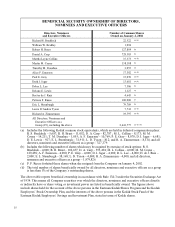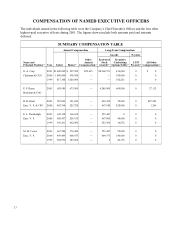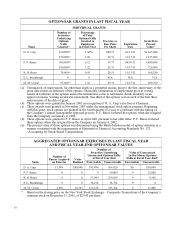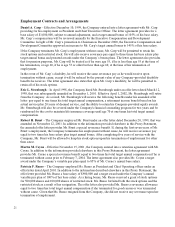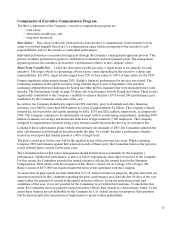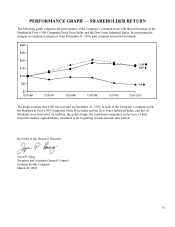Kodak 2001 Annual Report Download - page 112
Download and view the complete annual report
Please find page 112 of the 2001 Kodak annual report below. You can navigate through the pages in the report by either clicking on the pages listed below, or by using the keyword search tool below to find specific information within the annual report.REPORT OF THE EXECUTIVE COMPENSATION
AND DEVELOPMENT COMMITTEE
Role of the Committee
The Executive Compensation and Development Committee is made up of four independent members of the
Board of Directors. The Committee members are neither employees nor former employees of the Company.
The functions of the Committee include:
• reviewing the Company’s executive compensation strategy,
• reviewing the design of the Company’s executive compensation program,
• overseeing the administration of the executive compensation plans,
• monitoring and overseeing the career development of executives,
• annually establishing performance commitments for the CEO, executive officers and key management,
• reviewing performance annually and determining the individual elements of total compensation for the
CEO and other designated executives, and
• reviewing at least annually diversity representation within the Company.
Principles of Executive Compensation
The Company’s executive compensation program is designed to:
• tie compensation to performance that is consistent with the Company’s values and increases
shareholder value,
• attract and retain employees needed to meet the Company’s growth and performance objectives,
• set the total compensation of the Company’s executives at market-competitive levels,
• link compensation to both short- and long-term Company performance,
• place a significant portion of each executive’s compensation at risk; the more senior an executive’s
position, the more compensation should be at risk, and
• link the interests of the Company’s executives with its owners through stock ownership.
Executive Compensation Practices
Each year, the Company participates in surveys prepared by outside consultants. The companies included in
these surveys are those the Company competes with for executive talent. Most, but not all, of these companies
are included in the Dow Jones Industrial Index, the performance of which is shown in the Performance Graph
on page 30. Based largely on the median compensation of these surveyed companies, the Committee sets the
target compensation of the Company’s senior executives.
At the Committee’s request, the Company undertook a study during 2001 to determine whether its executive
compensation program was fulfilling its stated principles and objectives. As a result of this study, the
Committee approved a new annual executive assessment and reward program for the Company beginning in
2002. This plan establishes a new way to set executive expectations and goals, measure executive performance
and differentiate rewards based on results. Its chief features are greater focus on revenue growth, fewer key
goals, a new assessment of people leadership and greater discretion in assessing rewards. In addition to
revenue, economic profit will be the other performance measure used in funding the plan’s award pool. Both
measures will be measured annually, rather than on a three year weighed average basis, as was the case with
the plan’s prior performance measure, Economic Value Added (EVA). These same two measures will also be
used to establish the annual performance goals under the Wage Dividend Plan, the Company’s annual bonus
program for its U.S. employees, other than its executives.
25


